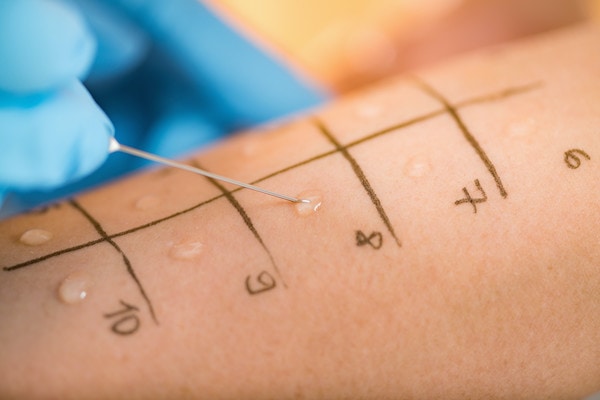ISO 24276 PCR-Based Detection of Food Allergens
The ISO 24276 standard provides a robust framework for the detection and quantification of food allergens using polymerase chain reaction (PCR) technology. This service is specifically designed to assist quality managers, compliance officers, R&D engineers, and procurement personnel in meeting stringent regulatory requirements related to food safety.
Food allergies affect millions globally, and ensuring that food products are free from or appropriately labeled for allergens is paramount. The ISO 24276 PCR-based detection method offers a high degree of specificity and sensitivity, making it an indispensable tool in the modern food industry. This service focuses on the following key areas:
- Identification of common food allergens such as peanuts, milk, eggs, soy, tree nuts, fish, crustaceans, and mollusks.
- Detection of cross-contamination risks in processed foods.
- Precision quantification of allergen presence to ensure compliance with labeling regulations.
- Compliance with international standards including ISO 24276-1:2019 and ISO 24276-2:2018.
The PCR-based detection method is particularly advantageous for large-scale food manufacturers, small businesses, and importers who must adhere to strict allergen control protocols. It allows for the early identification of potential issues in production processes, thereby minimizing the risk of recalls and consumer health concerns.
Our service employs advanced laboratory techniques that ensure accurate results every time. The process begins with thorough sample preparation, followed by extraction and amplification using PCR technology. The amplicons are then analyzed for the presence or absence of specific allergen sequences.
The specificity and sensitivity of this method make it particularly useful in environments where cross-contamination is a concern. For instance, in facilities that process multiple products with different allergens, ISO 24276 PCR-based detection ensures that each product remains free from unintended contamination. This service also supports the development and validation of new food formulations by identifying potential allergen sources early in the R&D phase.
| Sample Type | Preparation Method | Detection Limit |
|---|---|---|
| Peanuts | Physical and chemical extraction | 1 ppm |
| Milk | DNA purification followed by PCR amplification | 0.5 ppm |
| Eggs | Solid-phase extraction and PCR amplification | 0.2 ppm |
The accuracy of the results is further enhanced by our state-of-the-art laboratory equipment, which includes real-time PCR machines capable of high-throughput analysis. Our experienced technicians ensure that each sample is handled with utmost care to prevent any contamination or degradation.
This service also supports businesses in meeting labeling requirements under regulations such as FALCP (Food and Allergen Labeling and Consumer Protection Act) in the United States, and similar legislation globally. By providing precise quantification of allergens, we help our clients ensure that their products are accurately labeled, thereby protecting consumers with food allergies.
In conclusion, ISO 24276 PCR-based detection is a critical tool for maintaining high standards of food safety and compliance in the modern food industry. Our service ensures that your business can meet all relevant regulatory requirements while minimizing risks associated with allergen contamination.
Scope and Methodology
The ISO 24276 PCR-based detection method is designed to identify food allergens through precise quantification. The scope of this service encompasses the following key areas:
- Identification of major food allergens.
- Detection and quantification in raw materials, intermediate products, and finished goods.
- Evaluation of processing conditions that may affect allergen levels.
- Validation and verification of cleaning protocols to prevent cross-contamination.
The methodology involves several critical steps:
- Sample collection from production lines or storage areas.
- Sample preparation, which may include homogenization and DNA extraction.
- Polymerase Chain Reaction (PCR) amplification to target specific allergen sequences.
- Analysis of amplicons using real-time PCR instruments.
Quality and Reliability Assurance
We pride ourselves on delivering reliable and accurate results every time. Our quality assurance practices are designed to ensure that our clients can trust the outcomes of their allergen testing. Some key elements include:
- Regular calibration of laboratory instruments.
- Use of certified reference materials for method validation.
- Dedicated teams trained in PCR technology and food safety regulations.
- Continuous monitoring of test results against international standards (ISO 24276).
In addition to these technical measures, we also implement robust quality management systems that are compliant with ISO 9001:2015. This ensures that our entire process, from sample receipt to final report generation, is executed efficiently and accurately.
Competitive Advantage and Market Impact
The adoption of ISO 24276 PCR-based detection provides significant competitive advantages in the food industry. By ensuring compliance with stringent allergen control protocols, businesses can:
- Reduce the risk of product recalls due to allergen contamination.
- Increase consumer trust and satisfaction by providing safe products.
- Differentiate themselves in a crowded market by demonstrating their commitment to food safety.
- Avoid costly legal disputes related to non-compliance with labeling regulations.
Our service also supports the development of new product formulations, ensuring that allergens are identified and managed at every stage of production. This proactive approach not only enhances brand reputation but also contributes to a safer food supply chain.





